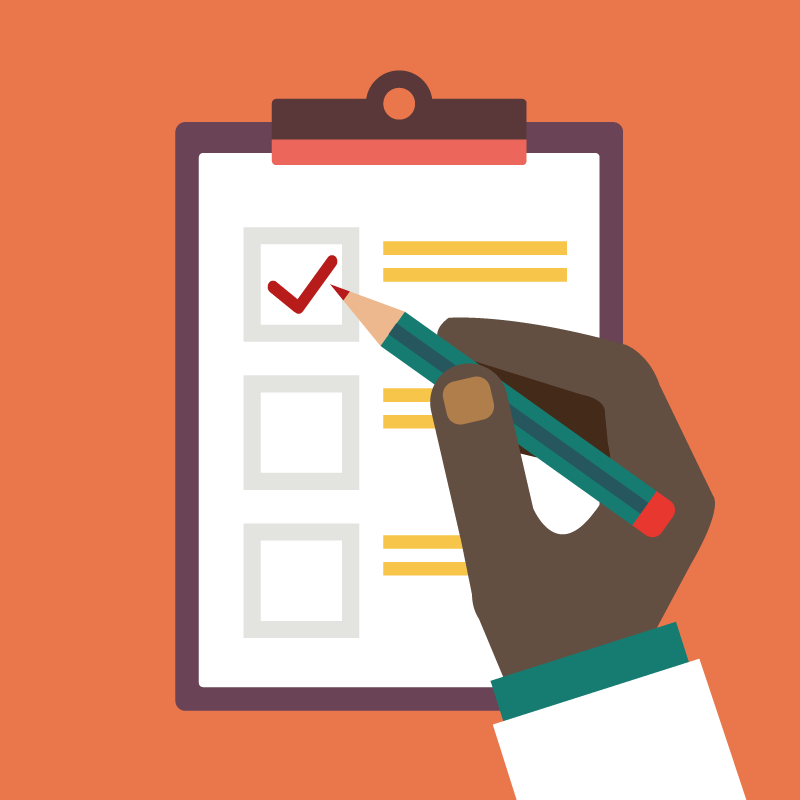Half of the time meetings are disorganized, dominated by one person, unproductive, disorganized, and inconclusive.
This is the reason why meetings are considered the biggest waste of time in the office culture. However, if planned and organized effectively, they are an opportunity to connect, brainstorm and produce innovative ideas.
Read this article to get an idea into planning and structuring an effective meeting!
Here is our game plan of the same:
How to conduct an effective meeting?
Before diving into how to plan and structure an effective meeting, it would be helpful to know what exactly do we mean by an effective meeting.
What is an effective meeting?
The word effective means successful or productive in producing a desired result or goal.
An effective meeting, thus, means a formal gathering of more than two people for achieving the desired goal successfully or productively.
An important component of an effective meeting is the time frame.
An effective meeting would complete the goal successfully within the set time frame or even less than the deadline as opposed to any other meeting spending long hours to get even decide on a point together.
This brings us down to the last component of the team spirit. An effective meeting would always consider everyone’s viewpoints when deciding on the goals or ways to achieve a goal.
In other words, the decisions are taken unanimously or in a democratic fashion.
What is effective meeting management?
Effective meeting management or planning an effective meeting begins before the actual meeting!
We need to keep in mind what happens before, during, and after a meeting to plan and manage a meeting efficiently.
Let us see what to do before a meeting.
Before the Meeting
1. Is the meeting necessary?

Most of the time a meeting is not even necessary. A quick call or mail can resolve the issue at hand without getting together and wasting time.
Hence, you need to ask yourself: Is the meeting really needed?
If you want to decide upon an important decision or discuss some new policy functioning, then you can consider having a meeting.
One thing that will make it easy to decide whether to have a meeting or not is to figure out the goal or the agenda. It is generally not a good idea to have a meeting if you don’t have a specific agenda or too many things to discuss, or if the meeting will take more than 1 hour of the participant’s time.
2. Set up an agenda

As stated above, agenda is a kind of goal that you want to achieve at the end of the meeting, or, in simple words, the topic of the meeting.
It is wiser to decide your agenda in advance if the meeting is going to be beyond an hour.
Set up your agenda before the meeting so that everyone comes prepared with their points for the discussion.
Even if you are calling a meeting for brainstorming a new product design or a new project idea, it would still save a lot of time when everyone knows what the agenda of the discussion will be.
An agenda will also keep everyone focused on the same issue at hand and not discuss random things.
You can also estimate the time needed for the meeting if you have the agenda in your mind.
It is generally not a good idea to discuss several things at once or have more than 2 agendas, as the meeting can stretch a bit long and chances are high that the participants will lose their focus.
3. State the type of meeting

Now, there can be various types of meetings.
The most common among them are informative and problem-solving meetings.
As the term informative suggests, these meetings are for sharing information with the participants.
It can be held for giving details about a new product or a project, or even for training the employees of the organization.
Problem-solving meetings are held to solve a problem or find an effective solution to a given problem or issue at hand.
It involves analyzing and planning to tackle the problem.
Other meetings include collaborative meetings, that occur at the team or department level for achieving a common goal; and brainstorming for coming up with new ideas.
Now, according to your goal and purpose, you can decide what type of meeting you need.
4. Send invitation to the right people

In order to conduct an effective meeting, it is very important that you decide who you want to invite to the meeting.
Some employees are good at decision-making skills, while some are good orators who can go on and on about their plans.
You may want to avoid the second ones, especially if you want a quick and effective meeting.
A better option can be to appoint delegates. They represent their respective departments of the organization.
Another method or rather a rule is the Two-Pizza Teams.
This idea was given by John Bezos, the founder of Amazon.
He said to create teams that can eat or share two pizzas together.
This way you would have to invite only a limited number of people and the decision-making would be quicker, productive, and democratic as no one department will overpower the decision made.
It is important to state all the important details such as the time, date, place, agenda, and type of meeting being held.
You can also include if any pre-meeting work needs to be done for increasing productivity to the maximum and ensuring everyone is on the same page and ready to discuss.
Let us now look at what to do during the meeting to make it more productive and organized.
During the meeting
1. Start with silence

This might sound like wasting time and defeating the purpose of the meeting, but starting with silence is actually a great tool for making a meeting effective!
You remain silent for the first 5-10 minutes where everyone goes through the material to be discussed and skim through it so that everyone gets mentally ready to begin with the discussion.
This will also be a good idea in case someone gets late. They can enter the venue without breaking the flow of the meeting. It can also help the participants to make pointers in case they haven’t prepared beforehand.
2. Give an outline

After everyone goes through the materials, you can start the meeting by giving the outline of the meeting briefly.
You can state the problem or agenda, in brief, to prepare everyone for the meeting.
You can tell the goals, the questions to address, the estimated time to be spent for them, and lastly, assigning the chairperson and the note keeper.
3. Assign a chairperson

To lead an organized and democratic meeting, a meeting needs a chairperson.
The chairperson plays an important role in the meeting as they make sure that everyone follows some basic ground rules, and that those rules are maintained throughout the meeting.
Some of the basic ground rules include giving everyone an equal chance to speak in the meeting, make sure that everyone listens to each other by creating an understanding environment, and making decisions through consensus.
Another important function or role a chairperson plays is to make sure that everyone sticks to the agenda and reminding them of the objective if someone goes astray.
Usually, the person with the highest position of authority takes the role of chairperson, but in cases where everyone is on the same level, you can either ask someone to volunteer or choose unanimously amongst the members.
4. Take notes

Another most important person in the meeting is the notetaker or the scribe.
Notetaker takes down all the details and important points discussed in the meeting, keeping a record of the generated ideas and also how much time did it take to generate those ideas.
The records are helpful as anyone can go through them later to clarify any doubt or resolve any questions, and be on track with the tasks allotted.
Usually, the chairperson of the meeting takes up the role of notetaker, but the person who calls the meeting or anyone in the meeting can volunteer to be the scribe or the notetaker.
5. Let the discussion flow

It is crucial that everyone contributes to the meeting and it doesn’t become monotonous and authoritative.
Hence, the chairperson has to make sure that the discussion flows and if someone is talking for too long, the chairperson can politely intervene and ask someone who hasn’t got a chance to share their viewpoint on the issue.
To create an atmosphere for discussion, ask questions like, “what do you think, Ms. B?”, or “does everyone agree with Mr. X?”
It is important that the communication flows effectively to reduce conflicts, enhancing creativity and innovation, and increasing productivity.
To know more about the importance of effective communication and reducing ineffective communication at the workplace, check out our article 10 Reasons Why Effective Communication Is Essential In The Workplace.
You can also keep a 5-minute open discussion forum at the end, where members can ask any doubts or clarify any details about the decision. The discussion ends with assigning tasks to the meeting members.
6. Summarize briefly

Now that the discussion is over, the chairman or anyone else can summarize the contents of the meeting and the decision made to make everyone clear of the decision and tasks assigned.
You can then thank everyone for attending and contributing to the meeting.
But the meeting does not end there!
There are tasks that need to be performed even after the meeting to eventually make the meeting effective and successful.
After the meeting
1. Summarize the results

After the meeting is over, the notetaker takes notes and summarizes the result.
This summary contains all the necessary details of the decision and tasks assigned.
It is then sent to all the participants of the meeting.
By now everyone knows what role or tasks they are supposed to do and start their work accordingly.
2. Track the progress

You need to keep in contact with the participants so as to know how things are going and what is their progress in the tasks decided.
This will give an idea as to whether the progress is meeting with the time frame decided or not.
You can also ask the members to give a progress report to keep a record of the things done.
Once, everyone has performed the tasks assigned, the meeting has ended successfully! If not, then you can schedule the next meeting at the latest, but remember, if it is necessary!
Before we conclude our article we have a bonus checklist for you!
Click on the link below to download the pdf containing all the important points to keep in mind before, during, and after the meeting!
Bonus Tips for managing a meeting effectively
We have cumulated a list of tips that would be helpful when planning a meeting effectively!
- Set a time frame: If you are confused about the agenda of the meeting, you can set a time frame! This works if you want to brainstorm.
- 15 minutes rule: If you want to structure a one hour meeting, then allocate maximum 15 minutes to per topic. Doing so will ensure that all the points get discussed.
- Acknowledge the member’s inputs: It is important to acknowledge and even aprreciate if someone comes up with a novel or innovative idea before, during, or after a meeting. It goes a long way to boost the morale of the employees, making them satisfied and feel belongingness with the organisation.
- Celebrate your success: If you are successful in completing your desired goal within the time frame set, celebrate with your meembers! This is refresh everyone and each one will look forward to work again with a positive mind frame.
To conclude
Planning a meeting can be tough and a tedious task, but we hope this article gave you some insight into planning and managing an effective meeting!
We saw all the steps you need to follow in order to plan a meeting effectively; before, during, and after the meeting.
Happy meeting planning!





